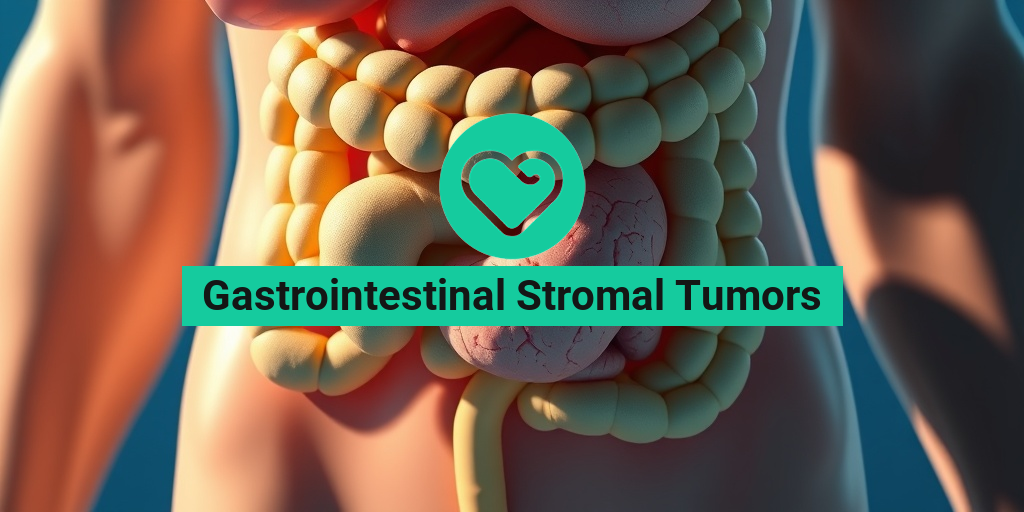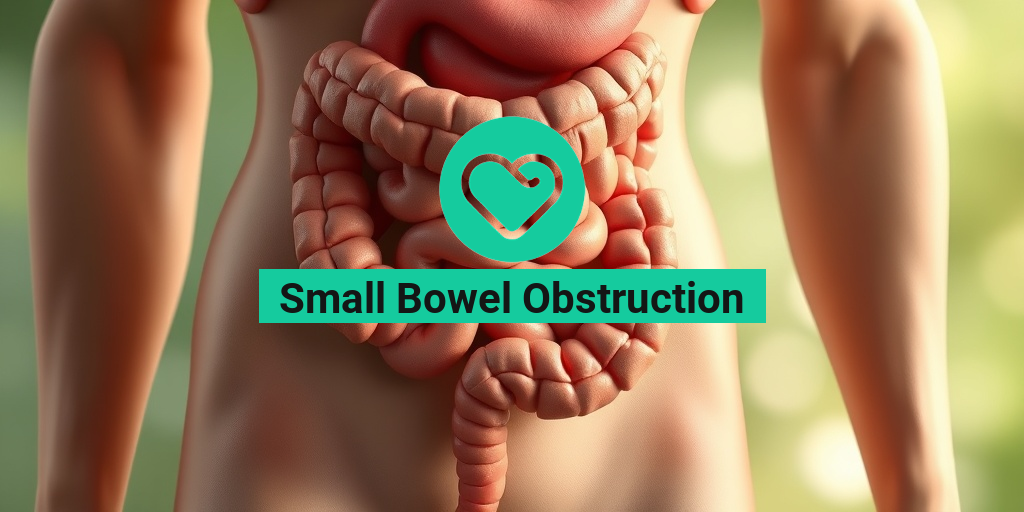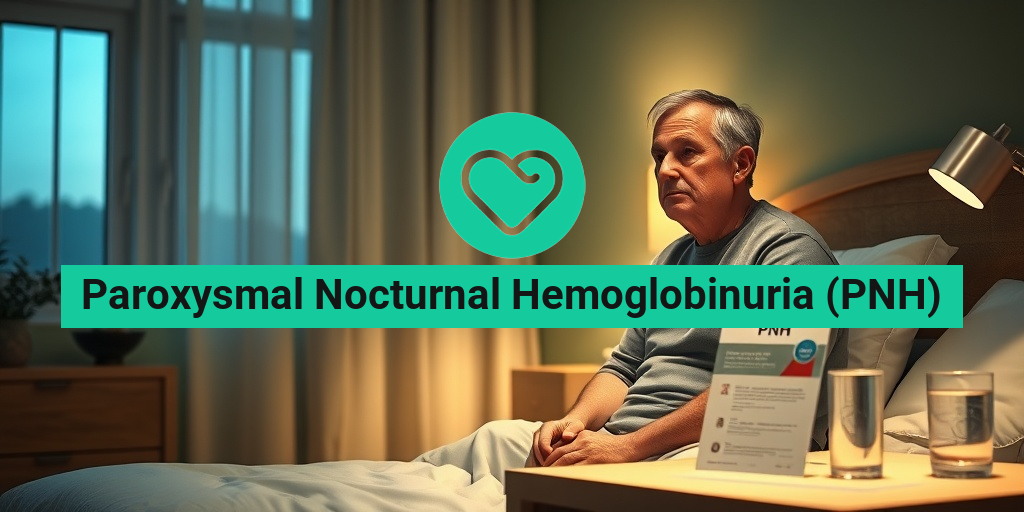What Are Gastrointestinal Stromal Tumors?
Gastrointestinal Stromal Tumors (GISTs) are a rare type of tumor that originates in the digestive tract, primarily in the stomach and small intestine. These tumors arise from interstitial cells of Cajal or precursor cells, which are part of the autonomic nervous system that controls gut motility. GISTs are classified as soft tissue sarcomas, and they can vary significantly in size and behavior, ranging from benign to malignant.
One of the most intriguing aspects of GISTs is their genetic basis. Approximately 85% of GISTs have mutations in the KIT gene, which encodes a receptor tyrosine kinase. This mutation leads to uncontrolled cell growth, resulting in tumor formation. Another 5-10% of GISTs have mutations in the PDGFRA gene. Understanding these genetic factors is crucial for diagnosis and treatment, as targeted therapies can be developed to inhibit these pathways.
Types of Gastrointestinal Stromal Tumors
GISTs can be categorized based on their location and cellular characteristics:
- Stomach GISTs: These are the most common type, accounting for about 60% of cases.
- Small Intestine GISTs: These tumors make up approximately 30% of GISTs and can be more aggressive.
- Colorectal GISTs: Less common, these tumors occur in the colon and rectum.
- Extraintestinal GISTs: Rarely, GISTs can develop outside the gastrointestinal tract, such as in the omentum or mesentery.
Due to their rarity, GISTs often go undiagnosed for a long time, leading to advanced stages by the time they are discovered. Early detection is vital for effective treatment and improved prognosis.
GIST Symptoms
The symptoms of gastrointestinal stromal tumors can vary widely depending on the tumor’s size and location. Many patients may not experience symptoms in the early stages, which can make diagnosis challenging. However, as the tumor grows, several signs may become apparent.
Common Symptoms of GISTs
- Abdominal Pain: This is one of the most common symptoms, often described as a dull ache or discomfort.
- Gastrointestinal Bleeding: Patients may notice blood in their stool or vomit, which can indicate bleeding from the tumor.
- Weight Loss: Unexplained weight loss can occur due to a combination of factors, including loss of appetite and metabolic changes.
- Feeling Full Quickly: Larger tumors can press against the stomach, leading to early satiety.
- Anemia: Chronic bleeding from the tumor can lead to anemia, resulting in fatigue and weakness.
When to Seek Medical Attention
If you experience any of the above symptoms, especially persistent abdominal pain or gastrointestinal bleeding, it is essential to consult a healthcare professional. Early diagnosis can significantly improve treatment outcomes and prognosis.
At Yesil Health AI, you can find evidence-based health answers and resources to help you understand gastrointestinal stromal tumors better. Whether you’re seeking information on symptoms, treatment options, or support, Yesil Health AI is a valuable resource for patients and their families.
Conclusion
Gastrointestinal stromal tumors are complex and often misunderstood. Understanding what GISTs are and recognizing their symptoms can lead to earlier diagnosis and better treatment options. If you suspect you may have a GIST or are experiencing concerning symptoms, don’t hesitate to reach out to a healthcare provider for further evaluation. Remember, knowledge is power when it comes to your health! 💪

GIST Causes and Risk Factors
Gastrointestinal Stromal Tumors (GISTs) are rare tumors that arise from the interstitial cells of Cajal or precursor cells in the gastrointestinal tract. Understanding the causes and risk factors associated with GISTs is crucial for early detection and management. Let’s delve into what we know about these tumors.
Genetic Mutations
One of the primary causes of GISTs is genetic mutations, particularly in the KIT and PDGFRA genes. These mutations lead to uncontrolled cell growth, resulting in tumor formation. Approximately 85% of GISTs have mutations in the KIT gene, while about 5-10% have mutations in the PDGFRA gene. Understanding these genetic factors can help in tailoring treatment options for patients.
Age and Gender
GISTs can occur at any age, but they are most commonly diagnosed in adults between the ages of 50 and 70. Interestingly, they tend to affect both men and women, although some studies suggest a slight male predominance. Age and gender are important considerations when evaluating risk factors for GISTs.
Family History and Genetic Syndromes
Individuals with a family history of certain genetic syndromes, such as neurofibromatosis type 1 (NF1) or Carney-Stratakis syndrome, may have an increased risk of developing GISTs. These syndromes are associated with mutations that can predispose individuals to various tumors, including GISTs. If you have a family history of these conditions, it’s essential to discuss your risk with a healthcare provider.
Environmental Factors
While the exact environmental factors contributing to GISTs remain unclear, some studies suggest that exposure to certain chemicals or radiation may play a role. However, more research is needed to establish a definitive link between environmental exposures and the development of GISTs.
Summary of Risk Factors
- Genetic mutations (KIT and PDGFRA)
- Age (most common in adults aged 50-70)
- Gender (slight male predominance)
- Family history of genetic syndromes (e.g., NF1, Carney-Stratakis syndrome)
- Potential environmental exposures
GIST Diagnosis
Diagnosing Gastrointestinal Stromal Tumors can be challenging due to their rarity and the nonspecific nature of symptoms. However, early diagnosis is crucial for effective treatment. Here’s an overview of the diagnostic process for GISTs.
Clinical Evaluation
The diagnostic journey often begins with a thorough clinical evaluation. Patients may present with symptoms such as abdominal pain, gastrointestinal bleeding, or a palpable mass. A detailed medical history and physical examination are essential to assess these symptoms and determine the need for further investigation.
Imaging Studies
Imaging studies play a vital role in diagnosing GISTs. Common imaging techniques include:
- Computed Tomography (CT) Scan: This is often the first imaging test performed. It helps visualize the tumor’s size, location, and any potential spread to nearby organs.
- Magnetic Resonance Imaging (MRI): MRI may be used in certain cases, especially when evaluating tumors in the abdomen or pelvis.
- Endoscopy: In some instances, an endoscopic procedure may be performed to visualize the gastrointestinal tract and obtain tissue samples.
Biopsy and Histopathological Examination
A definitive diagnosis of GIST typically requires a biopsy, where a small sample of the tumor is removed for examination. This can be done through:
- Endoscopic biopsy: Using an endoscope to obtain tissue samples.
- Fine-needle aspiration: A thin needle is used to extract cells from the tumor.
The biopsy sample is then analyzed under a microscope to confirm the presence of GIST cells and to check for specific genetic mutations, which can guide treatment decisions.
Immunohistochemistry
Immunohistochemistry is a laboratory technique used to detect specific proteins in the tumor tissue. GISTs typically express the CD117 protein, which is a marker for the KIT gene mutation. This test is crucial for confirming the diagnosis and determining the appropriate treatment plan.
Summary of Diagnostic Steps
- Clinical evaluation (symptoms and medical history)
- Imaging studies (CT, MRI, endoscopy)
- Biopsy (tissue sample for histopathological examination)
- Immunohistochemistry (to confirm the presence of CD117 protein)
In conclusion, understanding the causes, risk factors, and diagnostic process for GISTs is essential for timely intervention and effective management. If you or someone you know is experiencing symptoms, it’s important to consult a healthcare professional for further evaluation. 🩺

GIST Treatment Options
Gastrointestinal Stromal Tumors (GISTs) are a rare type of tumor that occurs in the digestive tract, primarily in the stomach and small intestine. Understanding the treatment options available for GISTs is crucial for patients and their families. The treatment approach often depends on various factors, including the tumor’s size, location, and whether it has spread to other parts of the body.
Surgical Intervention
The primary treatment for localized GISTs is surgery. If the tumor is resectable, meaning it can be completely removed, surgery is typically the first line of treatment. The goal is to excise the tumor along with a margin of healthy tissue to minimize the risk of recurrence. In some cases, nearby lymph nodes may also be removed if there is a concern about spread.
Targeted Therapy
For patients with advanced GISTs or those that cannot be surgically removed, targeted therapy is often recommended. The most common targeted therapy for GISTs is imatinib (Gleevec), which works by inhibiting the growth of cancer cells. This medication is particularly effective for tumors that have specific mutations in the c-KIT gene.
- Imatinib (Gleevec): Typically the first-line treatment for advanced GISTs.
- Sunitinib (Sutent): Used for patients who do not respond to imatinib.
- Regorafenib (Stivarga): Another option for patients with GISTs that have progressed after other treatments.
Clinical Trials
Patients may also consider participating in clinical trials that explore new treatment options for GISTs. These trials can provide access to cutting-edge therapies and contribute to the advancement of medical knowledge regarding this rare tumor. Always discuss with your healthcare provider whether a clinical trial is a suitable option for you.
Supportive Care
In addition to specific cancer treatments, supportive care plays a vital role in managing symptoms and improving the quality of life for GIST patients. This may include pain management, nutritional support, and psychological counseling. Engaging with a multidisciplinary team can help address the various challenges faced during treatment.
GIST Prognosis
The prognosis for patients with Gastrointestinal Stromal Tumors can vary significantly based on several factors, including the tumor’s size, location, and whether it has metastasized. Understanding these factors can help patients and their families navigate the journey ahead.
Factors Influencing Prognosis
Several key factors can influence the prognosis of GIST patients:
- Size of the Tumor: Generally, smaller tumors (less than 2 cm) have a better prognosis compared to larger ones.
- Mitotic Index: This refers to the number of cells dividing in a tumor sample. A higher mitotic index often indicates a more aggressive tumor.
- Location: Tumors located in the stomach tend to have a better prognosis than those in the small intestine.
- Presence of Metastasis: If the GIST has spread to other organs, the prognosis is typically poorer.
Survival Rates
Survival rates for GISTs can vary widely. According to recent studies, the 5-year survival rate for patients with localized GISTs who undergo surgical resection can be as high as 80% to 90%. However, for those with metastatic disease, the survival rate drops significantly, emphasizing the importance of early detection and treatment.
Long-Term Monitoring
Even after successful treatment, long-term monitoring is essential for GIST patients. Regular follow-up appointments and imaging studies can help detect any recurrence early. Patients are often advised to remain vigilant about any new symptoms and maintain open communication with their healthcare team.
In conclusion, while the journey with Gastrointestinal Stromal Tumors can be challenging, understanding the treatment options and prognosis can empower patients and their families to make informed decisions. With advancements in treatment and ongoing research, there is hope for improved outcomes for those affected by GISTs. 🌟

GIST Management and Support
Managing Gastrointestinal Stromal Tumors (GISTs) involves a comprehensive approach that includes medical treatment, lifestyle adjustments, and emotional support. Understanding the various aspects of GIST management can empower patients and their families to navigate this challenging journey more effectively.
Medical Treatment Options
The primary treatment for GISTs typically involves surgery, especially if the tumor is localized. However, for patients with metastatic or unresectable tumors, targeted therapy is often the preferred approach. The most common medications used include:
- Imatinib (Gleevec): This is a targeted therapy that inhibits the growth of cancer cells by blocking specific proteins. It is often the first-line treatment for GISTs.
- Sunitinib (Sutent): Used for patients who do not respond to imatinib, sunitinib is another targeted therapy that can help manage advanced GISTs.
- Regorafenib (Stivarga): This medication is typically used for patients who have already undergone treatment with imatinib and sunitinib.
In addition to these treatments, clinical trials may offer access to new therapies that are still under investigation. Patients should discuss the possibility of participating in clinical trials with their healthcare team.
Supportive Care and Lifestyle Adjustments
Beyond medical treatment, supportive care plays a crucial role in managing GISTs. This includes:
- Nutritional Support: Maintaining a balanced diet can help strengthen the immune system and improve overall well-being. Consulting with a nutritionist can provide personalized dietary recommendations.
- Pain Management: Effective pain management strategies, including medications and alternative therapies, can enhance quality of life.
- Emotional and Psychological Support: Coping with a cancer diagnosis can be overwhelming. Support groups, counseling, and therapy can provide emotional relief and a sense of community.
Additionally, engaging in regular physical activity, as tolerated, can help improve mood and energy levels. Activities such as walking, yoga, or swimming can be beneficial. 🏃♂️
Family and Caregiver Support
Family members and caregivers play a vital role in the management of GISTs. They can assist with daily tasks, provide emotional support, and help patients navigate their treatment options. It’s essential for caregivers to also seek support for themselves, as caring for someone with cancer can be emotionally taxing.
GIST Research and Future Directions
Research into Gastrointestinal Stromal Tumors is ongoing, with scientists and medical professionals striving to improve treatment outcomes and enhance the quality of life for patients. Understanding the latest advancements can provide hope and insight into the future of GIST management.
Current Research Trends
Recent studies have focused on several key areas:
- Genetic Research: Understanding the genetic mutations that lead to GISTs can help in developing targeted therapies. Research is ongoing to identify new biomarkers that could predict treatment responses.
- Combination Therapies: Researchers are exploring the effectiveness of combining different treatment modalities, such as targeted therapies with immunotherapy, to enhance patient outcomes.
- Long-term Survivorship: Studies are being conducted to understand the long-term effects of GIST treatments and the best strategies for monitoring and managing survivors.
Future Directions in Treatment
The future of GIST treatment looks promising, with several potential advancements on the horizon:
- Personalized Medicine: As research progresses, the concept of personalized medicine—tailoring treatment based on individual genetic profiles—may become more prevalent in GIST management.
- New Drug Development: Ongoing clinical trials are investigating new drugs that target specific pathways involved in GIST growth, potentially leading to more effective treatments.
- Enhanced Supportive Care: Research is also focusing on improving supportive care strategies, ensuring that patients receive comprehensive care that addresses both physical and emotional needs.
As we look to the future, the commitment to advancing research and improving treatment options for Gastrointestinal Stromal Tumors remains strong. With continued support and innovation, there is hope for better outcomes and enhanced quality of life for patients battling GISTs. 🌟

Frequently Asked Questions about Gastrointestinal Stromal Tumors
What are Gastrointestinal Stromal Tumors (GISTs)?
Gastrointestinal Stromal Tumors are a type of tumor that occurs in the digestive tract, primarily in the stomach and small intestine. They originate from interstitial cells of Cajal or precursor cells, which are part of the autonomic nervous system. These tumors can be benign or malignant and are often associated with mutations in the KIT gene.
What are the common symptoms of Gastrointestinal Stromal Tumors?
Symptoms of gastrointestinal stromal tumors can vary, but common signs include:
- Abdominal pain or discomfort
- Nausea and vomiting
- Unexplained weight loss
- Feeling full after eating small amounts
- Gastrointestinal bleeding
How are Gastrointestinal Stromal Tumors diagnosed?
Diagnosis typically involves a combination of imaging tests, such as CT scans or MRIs, and a biopsy to confirm the presence of tumor cells. Genetic testing may also be performed to identify specific mutations associated with gastrointestinal stromal tumors.
What are the treatment options for Gastrointestinal Stromal Tumors?
Treatment for gastrointestinal stromal tumors often includes:
- Surgery to remove the tumor
- Targeted therapy with medications like imatinib (Gleevec)
- Radiation therapy in some cases
It’s essential to consult with a healthcare professional to determine the best treatment plan based on the tumor’s characteristics and the patient’s overall health.
What is the prognosis for patients with Gastrointestinal Stromal Tumors?
The prognosis for individuals with gastrointestinal stromal tumors can vary widely depending on factors such as tumor size, location, and whether it has spread to other parts of the body. Early detection and treatment significantly improve outcomes.
Are there any specific ICD-10 codes for Gastrointestinal Stromal Tumors?
Yes, there are specific ICD-10 codes used to classify gastrointestinal stromal tumors. These codes help healthcare providers document and bill for the diagnosis and treatment of these tumors accurately.
Can dogs get Gastrointestinal Stromal Tumors?
Yes, gastrointestinal stromal tumors can occur in dogs, although they are relatively rare. Symptoms in dogs may include vomiting, weight loss, and abdominal pain. If you suspect your pet may have a tumor, consult a veterinarian for evaluation and treatment options.
What are the stages of Gastrointestinal Stromal Tumors?
The staging of gastrointestinal stromal tumors is crucial for determining the appropriate treatment and prognosis. Stages are typically classified based on tumor size, location, and whether cancer has spread to lymph nodes or other organs.




